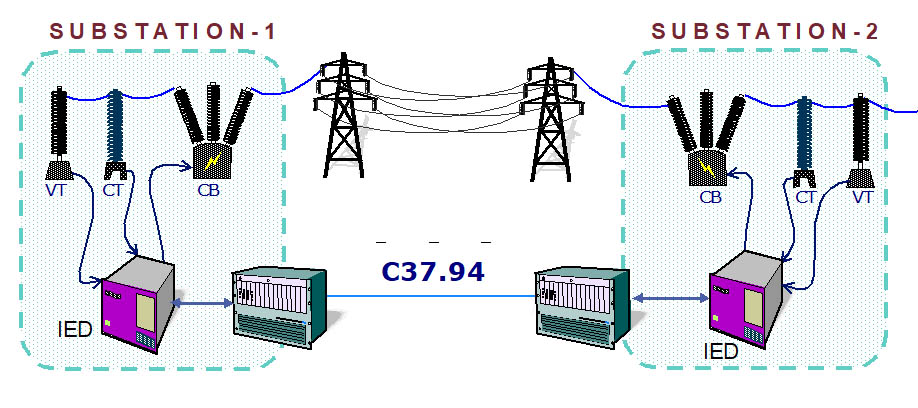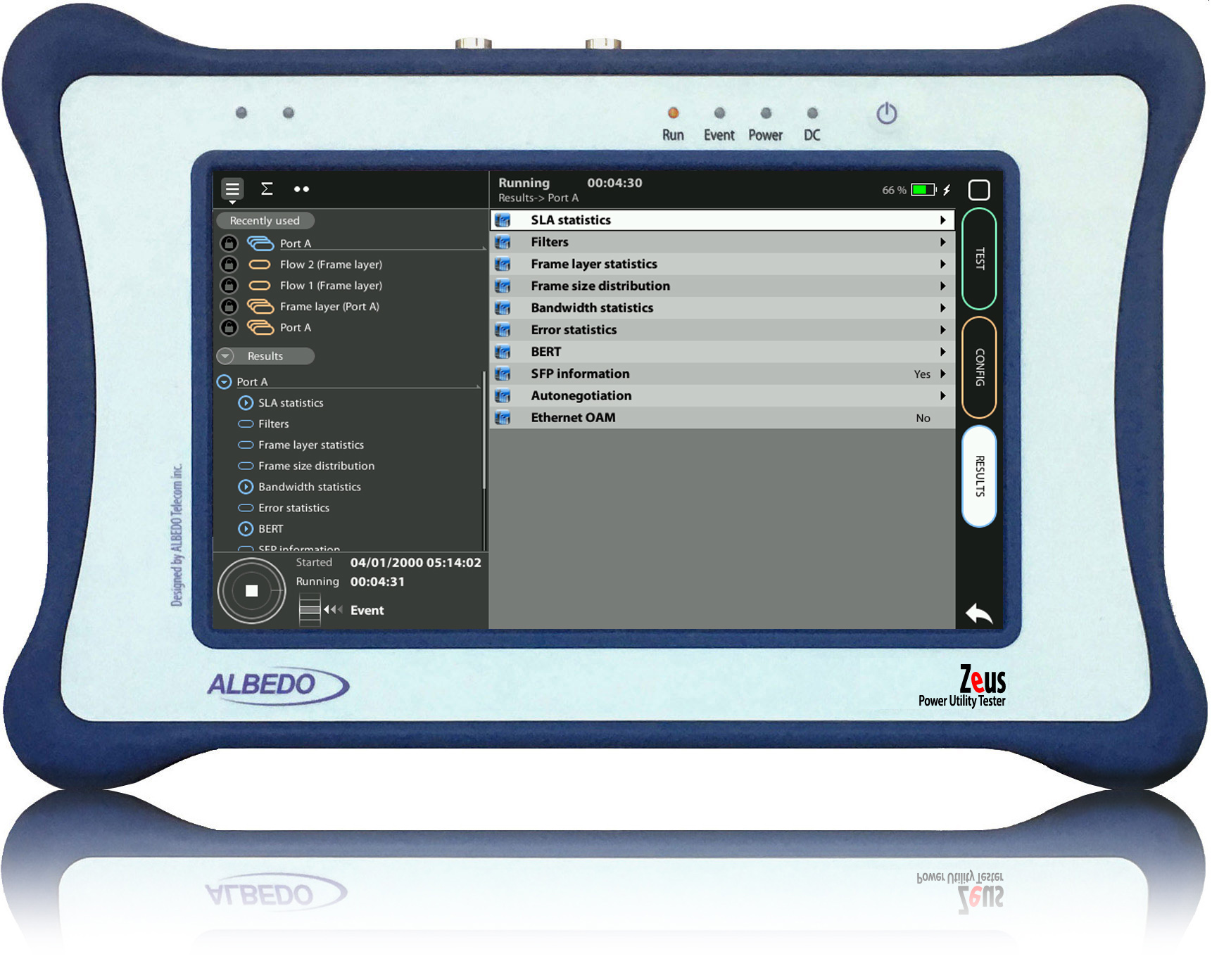Impairment Generation over C37.94
This test involves introducing simulated disturbances into the C37.94 channel to assess how the teleprotection can handle adverse conditions as it can be subject to signal distortion, noise, interference, and other that can affect its reliability.
BARCELONA NOV.17.2023
About C37.94 protection
IEEE C37.94 is a standard for teleprotection communication and control in power utilities, focusing on the communication aspects that ensure reliable operation of protection relays. Teleprotection involves the use of communication channels to transmit signals between relays to coordinate the strategy for isolating faults in the power system, including substations and distribution lines.

Fig 1. Protection schemes are based on the measurement of electric values and a communication link.
C37.94 defines the formats and protocols to be used in the telecommunications network, including data frames, transmission rates and other requirements that enable the use of protection schemes in power systems. This has always been considered a critical system to facilitate interoperability between substation connections of generation plants and the reliability power service.
Ensuring the standard implementation
Ensuring that equipment supports the standard is key to the reliability and interoperability of the system, so conformance testing verifies that equipment from different manufacturers can work together seamlessly, promoting a more robust and reliable power infrastructure. All engineers involved in the deployment or maintenance of C37.94 teleprotection should review and follow the manufacturer’s test procedures to ensure conformance testing.

Fig 2. C37.94 line protection.
Field engineers can use ALBEDO testers to check new C37.94 installations or to troubleshoot tele-protection relays and multiplexers using features such as Bit Error Rate Test (BERT), G.821, Event Analysis/Generation, Optical Power Meter One-Way/Round-Trip Delay, etc. to help engineers verify the protection system that prevents outages in a substation.
Impairment Generation Test
There are reasons to justify the reason to test C37.94 with impairment generation:

Fig 3. Delay insertion in pass-through mode.
- Reliability: The test helps evaluate the system’s under adverse conditions, ensuring that the equipment can transmit signals even in the presence of impairments.
- Performance: This testing allows for the verification of the performance in realistic scenarios, ensuring that it meets the communication requirements.
- Interoperability: Equipment from different manufacturers must work together for ensuring that diverse components of a teleprotection system can work seamlessly.
- Compliance: C37.94 specifies performance requirements under various conditions the impairment helps verify these standards.
- Fault Detection and Response: Impairment simulates challenging conditions that may occur during faults or disturbances in a power system, we have to be sure that the system can detect and respond appropriately under any condition because this is a mission critical application.
Then manufacturers, installers and operator should validate the resilience of C37.94 in real-world conditions, to arssure the reliability of power systems.
xGenius and Zeus

Fig 4. Zeus the favorite tester of field engineers from Canada to Australia, from Germany to South Africa.
xGenius and Zeus testers provide in-depth insight into the design, installation, maintenance, troubleshooting and engineering of Smart Grid communications infrastructures. The unit can test Ethernet/IP, PTP, GbE, IRIG-B, T1/E1, G703, C37.94 and GOOSE, SV and MMS protocols. One-way delay testing, supported by GPS, is available on all interfaces. Zeus has a set of programmable filters to capture live traffic at wire speed. You can now analyse GOOSE, SV, MMS and other protocols to decode and store them in PCAP format or calculate propagation delay from local or remote substations.
Testing C37.94 with ALBEDO
Using a dual port module over SMF or MMF with a suitable SFP and then a configurable bit rate between 64kbps and 768kbps in 64kbps increments.
Connectors
- Dual port operation over SMF or MMF with suitable SFP
Line
- Transmission clock: Recovered or internally synthesized
- Laser on and off control
Frame
- Unframed or framed operation.
- Frame structure follows IEEE C37.94 section 4.1
- Configurable bit-rate between 64 kb/s and 768 kb/s in steps of 64 kb/s

Fig 5. ALBEDO tester equipped with C37.94 double port module.
Line Analysis
- Frequency (Hz), frequency deviation (ppm)
- Transmitted optical power (dBm), received optical power (dBm)
- Received data rate (kb/s)
- SFP information: transceiver, vendor, model and wavelength
Frame and Pattern Analysis
- ITU-T G.821 performance: ES, SES, UAS, DM. ITU-T G.821 results include pass / fail indications
- Event detection and insertion: LOS, AIS, FAS, RDI (yellow), LSS, ALL0, ALL1, Slip, TSE, bit error, delay
Read Full Application Note
Impairment Generation over C.3794


